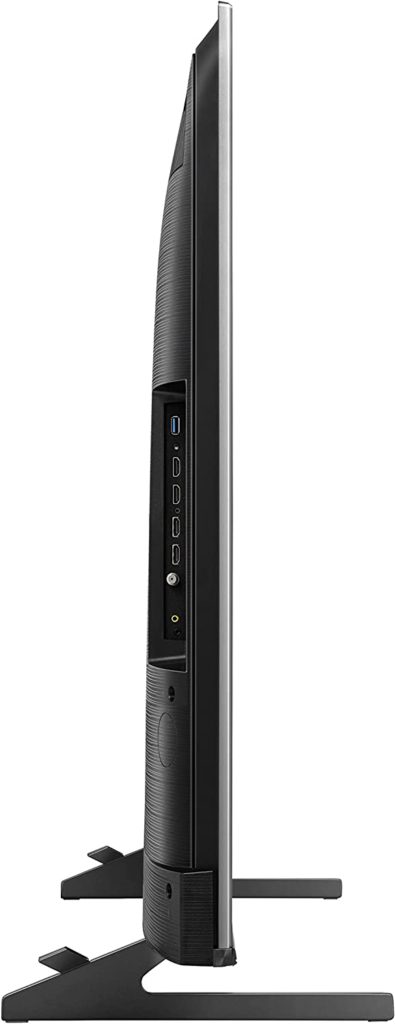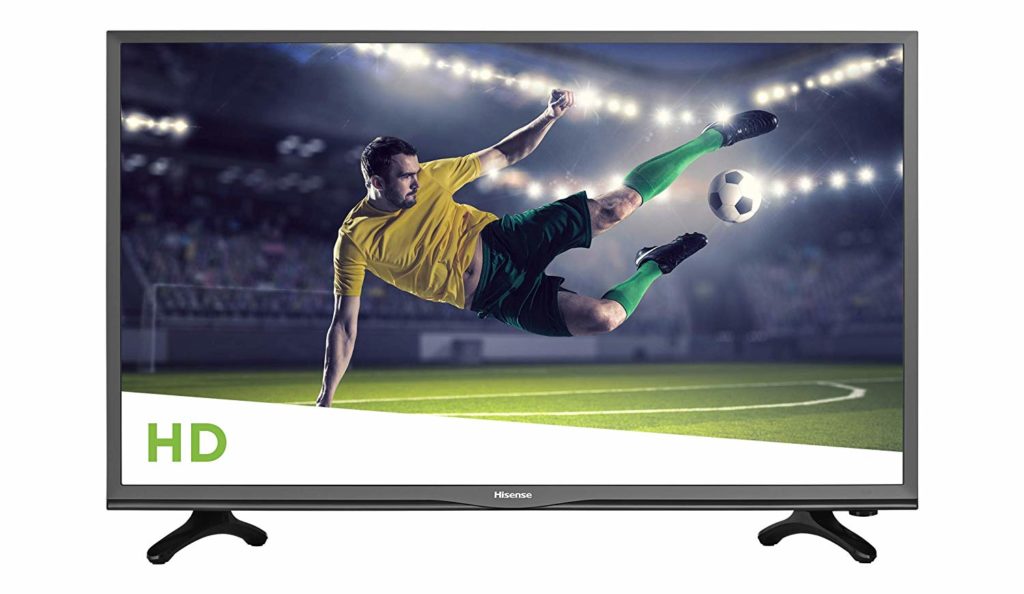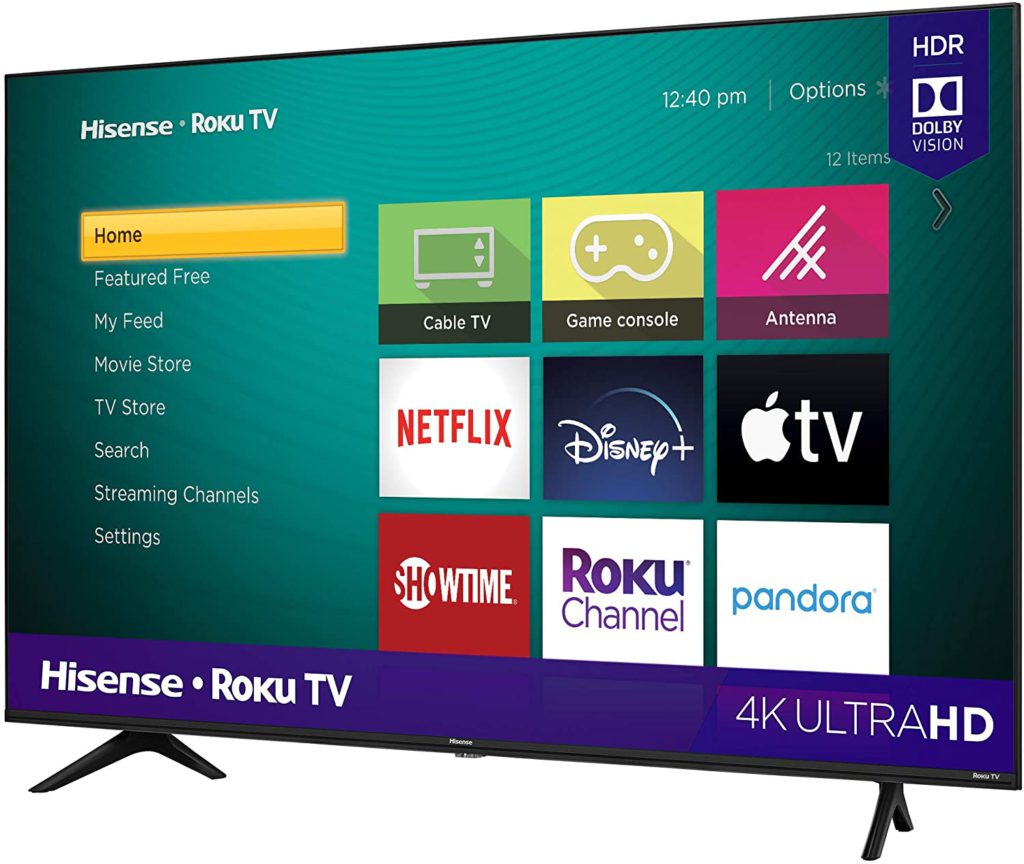This Hisense 75U8H review investigates the performance of a mid-range TV that promises to punch above its price range. Does the Hisense U8H do an excellent job showing movies and TV series? Should gamers and sports enthusiasts buy the Hisense U8H series? We answer these questions in upcoming sections of the review.
Content Breakdown
Hisense 75U8H review: What you’re looking for in a TV
The ideal TV should have the type of picture quality that tricks you into believing that you’re looking through an open window. This means that your TV should create colors that are accurate, vivid, and able to mimic the behavior of light. A great display should also deliver depth, detail, and texture that could almost jump off the screen.
Just as important is the smart TV interface that runs on your display. The platform should be fast, responsive, and glitch-free, with plenty of streaming apps and tools. A smart TV user interface should also have a simple layout that is easy to navigate.
Lastly, the ideal smart TV should have solid, durable hardware capable of delivering years of good service. It also doesn’t hurt to choose a display with accessible ports and an excellent design. Now, let’s dive into our Hisense 75U8H review to find out if it meets some or most of these expectations.

First looks
Hisense uses metal and sturdy plastic to enclose the U8H panel. The resulting chassis is a charcoal-black cabinet with touches of gray from metallic edges, bezels, and TV feet. Thin bezels frame the vast expanse of the 75U8H display, creating the illusion of a frameless screen.
At just under three inches at its thickest, the Hisense 75U8H looks neat if you mount it on a wall. A pair of angular TV legs will provide solid support if you choose an entertainment stand instead. The sheer size of the 75-inch Hisense U8H requires furniture that can accommodate the TV legs’ 65″ x15″ footprint.
The back panel of the U8H has a lined texture and a 400×400 VESA pattern. There are also two sets of inputs on the right end of the back panel.
Hisense 75U8H review: Ports and wireless connectivity
HDMI 2.1 ports are a significant selling point with the current crop of smart TVs, and the Hisense U8H has two. On paper, the two ports should support 4K/120 content without breaking a sweat. Along with the two HDMI 2.1 ports, an outward-facing column of ports also offers:
- A USB port
- One service port
- Two HDMI 2.0 ports with support for 4K content at 60fps
- An antenna/cable connector
- A composite AV port
- 3.5mm audio jack
A rear-facing inset holds an Ethernet port, an optical output, and a USB port. These should be enough to connect a large selection of devices. Lastly, Bluetooth and WiFi allow you to connect your mobile or audio devices and the TV.
[Read what others are saying about this TV]
Smart TV platform: Google TV and ease of use
The U8H runs on Google’s Android-based platform but with tweaks on the user interface. What you get is a UI that requires a stiff learning curve for anyone who needs to adjust the picture settings. You may also experience the odd screen freeze as you navigate the interface. The quick fix to this annoying problem is a software update.
In fact, an update will improve your user experience in other ways. The update should take care of issues like audio lag.
Once the platform stabilizes, you will have vast amounts of content at your fingertips. You also have helpful tools like hands-free voice control with Google Assistant. Features like Chromecast and Google Home allow you to access and control smart home devices through the Hisense U8H.
Hisense 75U8H review: Hardware and performance
The Hisense U8H series uses QLED technology to deliver a wide color gamut and near-perfect color reproduction.
Mini-LED backlights provide the 120Hz VA panel of the U8H with an average peak brightness level of 1,000 nits. The blinding brightness of the 75U8H guarantees perfect reflection handling and breathtaking HDR content.
Smaller backlight arrays create hundreds of local dimming zones that excel at preventing light bleed through. The happy result of mini-LED backlighting is deep black levels that combine with brilliant colors to create impressive contrast. Here’s how the hardware performs from a viewer’s perspective:
1. Color reproduction
QLED displays like the Hisense U8H have accurate color reproduction. The native brightness of the TV expands the color volume of the TV to create realistic mimicry of light. This secret sauce delivers HDR highlights and content that breathes new life into your favorite nature show.
2. Brightness, contrast, and detail
The difference between peak brightness and black levels creates a native contrast ratio of 6,000:1. This is what this number means for your viewing pleasure:
- Fine details that stand out; even in dark scenes
- Textures that stand out in relief to the main surface
- 3D and depth simulation that immerses you in the scene unfolding on your screen
Activating local dimming enhances the contrast of the U8H by reducing light bleed through to near zero. The tradeoff is a loss of detail in dark images with pinpricks of light.
3. Viewing angles
VA panels have narrow viewing angles that rule out wide sitting arrangements. Watching the U8H at an angle degrades the image, with a noticeable color shift at 30 degrees. Older, more expensive brands like Samsung and Sony use filters to improve the viewing angles of their VA panels. Hisense lacks such a filter, which rules out the U8H as a TV for a group of sports fans.
4. Video upscaling
The Hisense U8H does an excellent job of displaying lower-resolution content.
5. Screen uniformity
Black and gray screens have an even distribution of light, thanks to the solid build of the Hisense U8H hardware. This means zero light bleedthrough, zero dark patches, and minimal dirty-screen effect.
Motion handling
The 120Hz U8H panel delivers a response time of just under 10ms. This translates to responsive pixels that keep up with the signal streams from fast-action content. There is little motion blur aside from slight ghosting with red elements.
An average input lag of 16ms makes for smooth, responsive gameplay at a frame rate of 60fps. Unfortunately, the U8H may have issues with 4K/120 game titles on PC and console. This is where a firmware update and input from Hisense come in. It’s worth mentioning that Hisense includes gaming features like FreeSync, ALLM, and VRR in the specifications of the U8H. These features are moot until the 4K/120 issue resolves.
Lastly, the response time of the Hisense U8H may be a little too fast for 24p video. 24p is the type of low frame-rate content that’s common with cable and over-the-air channels. This means that you may notice choppy images while watching slow, panning scenes on cable.
Pros
- Affordable
- Bright with good reflection handling
- Picture-perfect HDR content
- Good color accuracy
- The internal speakers of the Hisense 75U8H sound good
- Two-year limited warranty for hardware failure (product registration activates the warranty)
Cons
- Shaky performance with 4K/120 gaming
- You might have some audio sync issues with external audio devices
- Adjusting the picture settings may involve a scavenger hunt through the smart TV interface
- The manufacturer should improve quality control to match the panel’s perfect picture quality
Hisense 75U8H review verdict: Picture quality that punches above its price range
The breathtaking images from the Hisense U8H leave the competition in the dust regarding color reproduction, deep blacks, and brightness; the Hisense U8H series outperforms displays from established brands.
This Hisense 75U8H review finds a widescreen TV that should blow you away, save for a few bugs the manufacturer needs to fix. Click here to learn more about this television.
Read more:
Amazon Kindle Scribe Review: An E-reader That Lets You Sketch and Scribble
Google Nest WiFi Pro Review: Good Speeds, Privacy Concerns
MSI Gaming Trio 4090 Review: Runs Cool and Quiet, with Triple-Digit Frame Rates
Samsung Q80BD Review: One of the Best TVs Money Can Buy
Sony X90CK Review: Can Decent Performance Fend Off Stiff Competition?



